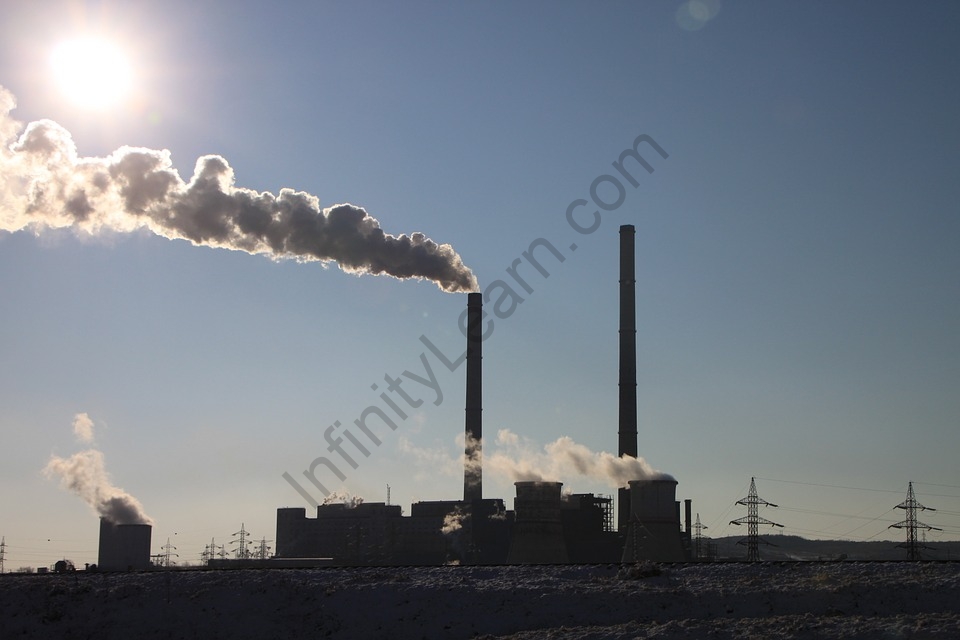Table of Contents
Important Topic: Real Gases

The term ‘real gas’ usually refers to a gas that doesn’t behave like a perfect gas. Their behaviour can be explained by interactions between gaseous molecules. These intermolecular interactions between gas particles are the reason why real gases do not obey the ideal gas law.
It is important to notice that in most cases, the behaviour of a true gas is nearly equivalent to that of a perfect gas. Therefore, in many applications, detailed analysis of the deviations of real gases from ideal behaviour is unnecessary. Reasonably accurate calculations can be made by applying the ideal gas equation to these real gases. However, it is important to note that when a gas approaches its condensation point it should be considered a real gas.
Furthermore, almost all gases should be treated as true gases as they approach their critical points. Other situations in which gases can be regarded as real gases include situations in which the pressure applied to the gas is very high, and to explain the Joule–Thomson effect. It is also important to note that the deviation of a real gas from the behaviour of an ideal gas can be expressed in terms of the compressibility factor (also known as the gas diffusivity factor or compression factor; usually with the symbol ‘Z’). is represented by.)
What are the various factors to be considered when dealing with real gases?
To understand how real gases behave, several factors must be considered. The various factors that must be considered when dealing with real gases are listed below.
Compressive effect on real gas.
Different real gases have different specific heat capacities.
The effect of van der Waals is on the interaction between the molecules of the real gas.
Non-equilibrium thermodynamic effects can arise in the system.
Changes in the composition of the gas as a result of molecular dissociation along with the variable composition of the gas and the elementary reactions that take place.
The compressibility factor for a true gas at high is
Natural gas’s compression factor (corrected for the ratio of ideal volume to actual volume) is about a 0.5% improvement in pressure-volume per 100 psi for a pore meter at normal pressure and temperature conditions.
(P+aV2)(V−b)=RT
at high pressure aV2 can be neglected
PV−Pb = RT
PV = RT + Pb
PVRT = 1+PbRT
Z = 1+PbRT
Z>1 at high pressure
Examples of real gases
It is important to understand that almost all gases can behave as real gases when they are kept under suitable conditions. For example, under standard conditions for temperature and pressure (commonly abbreviated to STP), the behaviour of air can be estimated with the help of the ideal gas law. This is because air behaves like a perfect gas under standard conditions for temperature and pressure. However, when the pressure exerted on the air increases to a very high magnitude, the same air begins to exhibit significant deviations from the ideal gas law and begins to exhibit behaviour similar to that of real gas.
Furthermore, any increase in the temperature of the gas also can have an identical effect. This is because an increase in the absolute temperature of gas leads to an increase in the average kinetic energy of the gas molecules. This, in turn, results in an increase in the number of interactions between gas molecules. Therefore, an increase in the absolute temperature of the air can also trigger a significant deviation from the ideal behaviour and make it a true gas.
Thus, almost all gases can behave like ideal gases as well as real gases. Most gases are known to exhibit almost ideal behaviour when the conditions are relatively ambient. However, in relatively extreme situations, in which either the temperature of the gas is raised to a very high value, the pressure on the gas is raised to a very high value, or both the temperature and the pressure associated with the gas are greatly increased. At higher values, most gases deviate from ideal behaviour to become real gases.
FAQs
What's the difference between ideal gases and real gases?
Real gases are those gases that do not obey the ideal gas law whereas all ideal gases must obey the ideal gas equation. Furthermore, an ideal gas must obey all gas laws under all conditions, but a real gas may not obey individual gas laws under some conditions (which are relatively extreme). It may also be noted that real gases liquefy when cooled to a temperature below their boiling point.
How can the ideal gas equation be modified to apply to real gases?
The ideal gas equation can be modified to the van der Waals equation to take into account the reasons why real gases do not behave ideally. This equation also takes into account the volume occupied by the molecules of a real gas and the interaction between the molecules of real gases (the attractive and repulsive forces arising between them).
What's the compressibility factor, what's its value for a real and ideal gas?
For an ideal gas, Vreal=Videal. Therefore for an ideal gas, the compressibility factor is equal to 1. The compressibility factor for a real gas can be less than or greater than 1: If the compressibility factor is less than 1, the gas will show a negative deviation and it'll be more compressible than expected.






